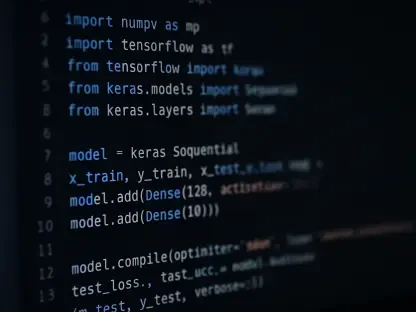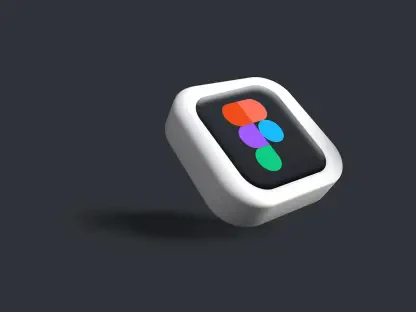In the fast-paced world of artificial intelligence, crafting the perfect prompt for large language models (LLMs) can feel like searching for a needle in a haystack, and with teams spending countless hours tweaking phrases through trial and error, the process often resembles guesswork more than science. Enter Google’s latest innovation, a tool designed to transform this chaos into a structured, data-driven workflow. Unveiled as a beacon for developers and AI enthusiasts alike, this framework promises to redefine how prompts are created, tested, and refined. What could this mean for the future of AI interactions?
Why Prompt Engineering Desperately Needs Innovation
Prompt engineering, the art of designing inputs to elicit desired outputs from LLMs, has become a cornerstone of AI development across industries. Yet, the field remains plagued by inefficiencies. Teams frequently rely on subjective judgment, lacking standardized methods to measure success or replicate results. This ad-hoc approach slows down progress and frustrates even the most seasoned professionals, as the right phrasing can make or break a model’s performance.
The stakes are high, especially as businesses integrate LLMs into customer service, content creation, and data analysis. A recent study by an AI research group revealed that poorly designed prompts can reduce model accuracy by up to 40%, costing companies time and resources. Google’s new tool steps into this gap, aiming to replace intuition with precision and offer a lifeline to those navigating the complexities of AI communication.
The Messy Reality of Crafting Prompts Today
Behind the sleek interfaces of AI applications lies a messy reality: prompt engineering is often a disjointed process. Developers might test inputs on one platform, store iterations in scattered spreadsheets, and evaluate results based on vague impressions rather than concrete data. This fragmented workflow not only hampers efficiency but also stifles collaboration among teams, particularly when multiple stakeholders are involved.
As models evolve with frequent updates, the need for constant prompt adjustments adds another layer of frustration. Without a centralized system, tracking what works and what doesn’t becomes nearly impossible. Industry reports estimate that teams spend up to 30% of their project timelines on prompt-related tasks alone, highlighting a critical bottleneck that Google’s latest solution seeks to address with a unified, streamlined approach.
Inside the New Tool: Features That Transform Prompt Design
At the heart of Google’s innovation is LLM-Evalkit, an open-source framework built on Vertex AI SDKs and integrated with Google Cloud workflows. This tool reimagines prompt engineering by offering versioning and tracking capabilities, allowing users to store and compare iterations in one cohesive environment. No more digging through endless documents—every change is logged and accessible for review.
Beyond organization, the framework introduces metrics-driven evaluation, enabling teams to define specific tasks, curate representative datasets, and measure outputs with precision. A seamless feedback loop further enhances experimentation, letting users track performance without switching platforms. Perhaps most striking is its no-code interface, which empowers non-technical professionals like UX writers to contribute alongside developers, broadening the scope of input and creativity.
Early adopters have already reported impressive results, with some teams cutting prompt iteration time by nearly 25%. By turning a once-opaque process into a transparent, quantifiable endeavor, this tool sets a new standard for how prompts are designed and optimized, ensuring that every tweak is backed by data rather than guesswork.
What Experts and Users Are Saying
Feedback from the field underscores the transformative potential of this framework. Michael Santoro, a key figure in its development, shared on LinkedIn, “For too long, teams have wrestled with disjointed processes. This tool unites everyone under a shared, measurable system, making prompt engineering more accessible and effective.” His words resonate with a growing frustration in the AI community over inconsistent methods.
Users on platforms like GitHub have echoed similar enthusiasm, praising the ability to finally manage prompts systematically. A data scientist from a mid-sized tech firm noted, “Having a single place to test, track, and refine prompts is a game-changer. It’s already saving us hours each week.” With tutorials available through Google Cloud Console and a $300 trial credit on offer, many are eager to explore how this solution can elevate their workflows.
The consensus points to a shared relief at moving away from haphazard approaches. Practitioners value the integration with existing cloud tools, seeing it as a step toward standardizing a critical aspect of AI development. This groundswell of support suggests that the framework could quickly become an industry staple.
How Teams Can Implement This Solution Now
For those ready to overhaul their prompt engineering process, adopting LLM-Evalkit offers a clear path forward. Start by accessing the open-source framework on GitHub and diving into tutorials via Google Cloud Console to understand its interface. This initial step ensures that all team members, regardless of technical expertise, can navigate the tool with ease.
Next, define precise objectives for your LLM tasks and gather datasets that mirror real-world scenarios to guide prompt creation. Use the versioning feature to experiment with multiple inputs, track modifications, and analyze outcomes through built-in metrics. Encourage collaboration by inviting diverse team members to contribute via the no-code platform, ensuring a range of perspectives shapes the final results. Continuous refinement, driven by performance data, keeps prompts aligned with evolving model capabilities, maximizing impact.
Reflecting on a Milestone in AI Development
Looking back, the introduction of LLM-Evalkit marked a pivotal moment in the journey of AI prompt engineering. It tackled long-standing challenges like scattered documentation and inconsistent evaluation, replacing them with a unified platform that prioritized structure and accountability. Teams who adopted it early saw not just efficiency gains, but also a newfound ability to collaborate across disciplines.
The broader impact was evident as the tool democratized access to sophisticated prompt design, empowering a wider range of professionals to engage with LLMs. As the industry continued to evolve, the framework stood as a reminder of the power of systematic innovation. For those yet to explore this solution, the next step was clear: dive into the platform, experiment with its features, and contribute to shaping the future of smarter AI interactions.









